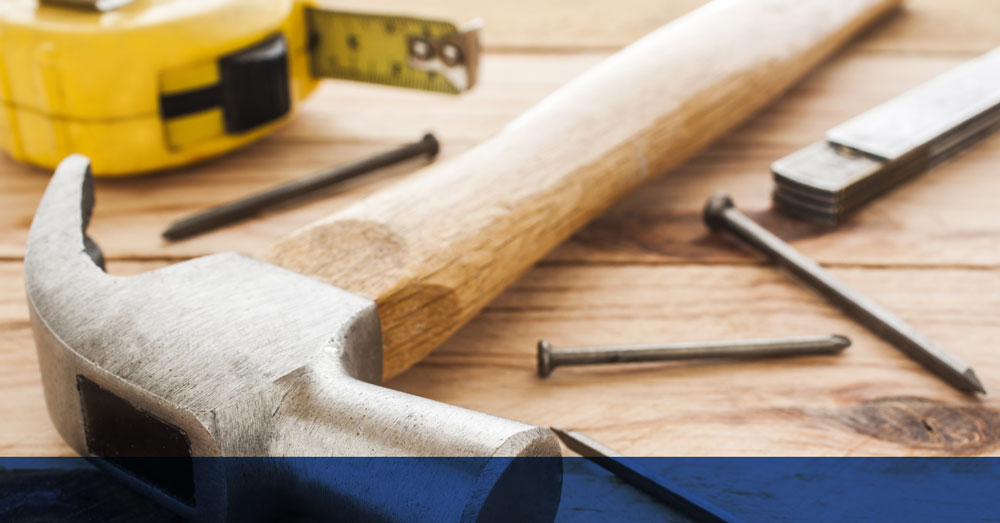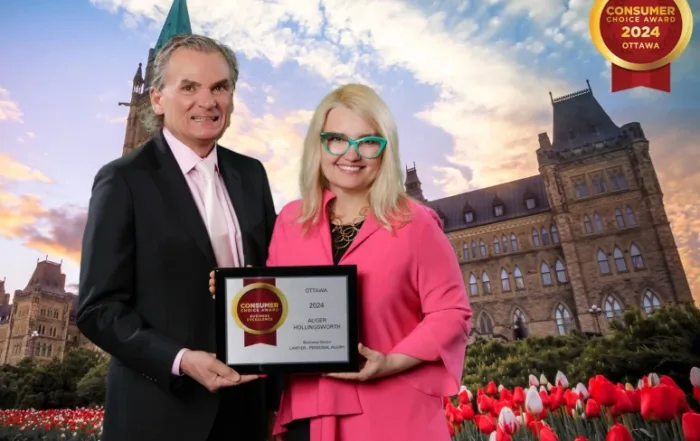Tax Credits Grants to Help With Your Renovation

After an injury, many of our clients require modifications to their houses to make them more accessible. These modifications are essential for maintaining our clients’ to maintain their lifestyles and independence. However, these home renovations can be costly. The following article, reprinted by permission from Kyla Cullain of BuildAble.ca, provides an excellent summary of some tax credits and grants offered by the government, which can help you save money while making your home more accessible.
=====================================================
Making our homes safe and accessible is incredibly important in maintaining our independence, our health and well-being. Unfortunately, there are still costs associated with transforming our homes into safe spaces. We’ve compiled a small list below of available tax credits that can help ease some of the expenses.
Home Accessibility Tax Credit (HATC)
This is a federal tax credit for those renovating their home to make it safe and accessible.
The Home Accessibility Tax Credit (HATC) is for eligible individuals with disabilities (qualified for the disability tax credit) and/or for individuals who are 65 years of age or older at the end of the year. The HATC applies to total qualifying expenses up to $10,000 per year, resulting in a maximum tax credit of $1,500 ($10,000 x 15%).
The HATC is claimed when filing your annual tax return – so make sure you hang on to all of your receipts/documentation from BuildAble to receive your return!
A qualifying renovation is a renovation or alteration that is of an enduring nature and is integral to the eligible dwelling (including the land that forms part of the eligible dwelling). Examples that should qualify:
- Grab bars and safety rails
- Replacing a bathtub with a roll-in shower, accessible shower or tub cuts
- Step-in or walk-in bathtub
- Wheelchair lifts
- Non-slip flooring or anti-slip treatments
- Switching to lever style handles or faucets
- Widening your doorways
- Labour costs from professionals
- Permits for construction, and building plans
- Building materials and fixtures
- Outdoor or indoor ramps
- Lowering kitchen or bathroom cabinets so the person can use them
- Equipment rentals and more
Click here to read more about the HATC from the Government of Canada, and for further information on eligibility, qualifying renovations and filing.
Medical Expense Tax Credit (METC)
You may have an eligible renovation that also qualifies as a medical expense. If so, you can claim both the federal Medical Expense Tax Credit (METC) AND the home accessibility tax credit (HATC). While these costs to renovate or alter a home to accommodate the use of a wheelchair may qualify as medical expenses, types of expenses related to other types of impairment may also qualify. In all cases, keep receipts and any other related documents to support your claim. Read more here.
The Seniors’ Home Safety Tax Credit (Ontario) – 2021 ONLY
The Seniors’ Home Safety Tax Credit will help you make your home safer and more accessible, helping you stay in your home longer. This is eligible for:
- seniors who are 65 by the end of 2021
- people who live with senior relatives
The Seniors’ Home Safety Tax Credit is worth 25% of up to $10,000 in eligible expenses for a senior’s principal residence in Ontario. The maximum credit is $2,500.
You can claim the credit on your 2021 Income Tax and Benefit Return.
https://www.ontario.ca/page/seniors-home-safety-tax-credit
Note: If you are 65 years or older, you may be able to claim the (1) HATC, the (2) METC; and the (3) Seniors’ Home Safety Tax Credit for the same renovation or accessibility modifications! We encourage you to reach out to your financial planner and/or accountant to discuss.
The Disability Tax Credit (DTC)
The disability tax credit (DTC) is a non-refundable tax credit that helps persons with disabilities or their supporting persons reduce the amount of income tax they may have to pay. An individual may claim the disability amount once they are eligible for the DTC. This amount includes a supplement for persons under 18 years of age at the end of the year.
The purpose of the DTC is to provide for greater tax equity by allowing some relief for disability costs, since these are unavoidable additional expenses that other taxpayers don’t have to face.
Note: If you are eligible for the DTC, you may be able to claim both the (1) HATC, AND the (2) METC for the same renovation or accessibility modifications!
We encourage you to reach out to your financial planner and/or accountant to discuss.
Ontario Assistive Device Program
While this isn’t applicable to renovations – it’s important to be aware of the Assistive Devices Program, which provides consumer centered support and funding to Ontario residents who have long-term physical disabilities and to provide access to personalized assistive devices appropriate for the individual’s basic needs.
Devices covered by the program are intended to enable people with physical disabilities to increase their independence through access to assistive devices responsive to their individual needs. Initial access is often through a medical specialist or general practitioner who provides a diagnosis. In most device categories, an authorizer assesses the specific needs of the person and prescribes appropriate equipment or supplies.
Easter Seals
Easter Seals Ontario provides programs and services to children and youth with physical disabilities across Ontario to help them achieve greater independence, accessibility and integration.
March of Dimes
Funded by the government of Ontario, the Home and Vehicle Modification® Program helps people living in Ontario pay for crucial renovations and retrofits. This includes anything from widening doorways for a wheelchair to modifying a van so someone who uses an assistive device can drive it. The goal is to keep people at home and in their communities.
Find out more about the application process, and whether you’re eligible, here to go to the HVMP – How to Apply page.
March of Dimes Canada Assistive Devices Program assists adults with physical disabilities who are in financial need to purchase assistive devices that increase their mobility and functional independence.
Other potential savings or rebates (for accessible or non-accessible renovations):
GST/HST New Housing Rebate
The GST/HST new housing rebate allows an individual to recover some of the GST or the federal part of the HST paid for a new or substantially renovated house that is for use as the individual’s, or their relation’s, primary place of residence, when all of the other conditions are met.
Substantial Renovations and the GST/HST New Housing Rebate
The new housing rebate applies to the purchase, construction or substantial renovation of a residential complex. Even though the rebate is called the “new” housing rebate, individuals who substantially renovate their existing homes may be eligible to claim it (in addition to individuals who construct new homes or purchase them from builders).
Home Efficiency Rebate
The Home Efficiency Rebate can help lower your energy costs and make it more comfortable year-round. Get up to $5,000 in rebates for insulation, air sealing, new windows/doors, water heaters, boilers, furnaces and home energy assessments.














